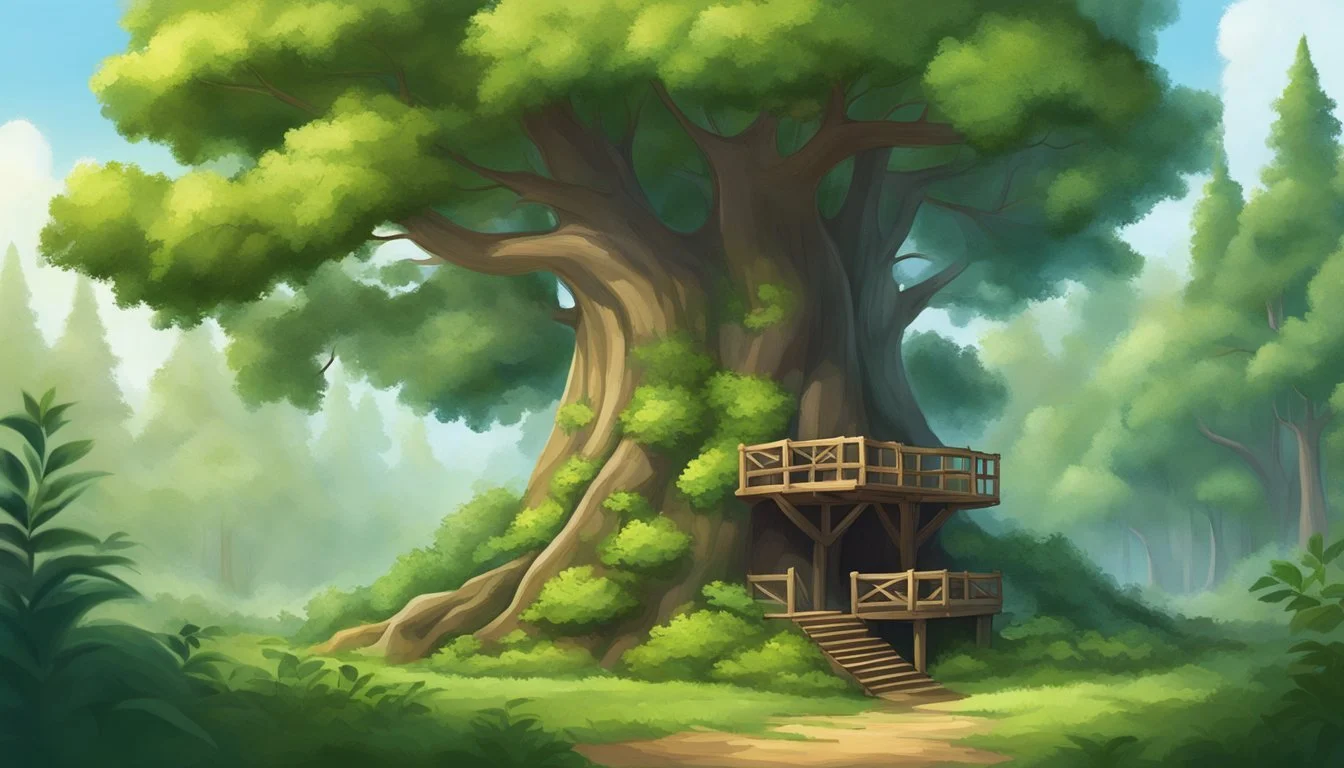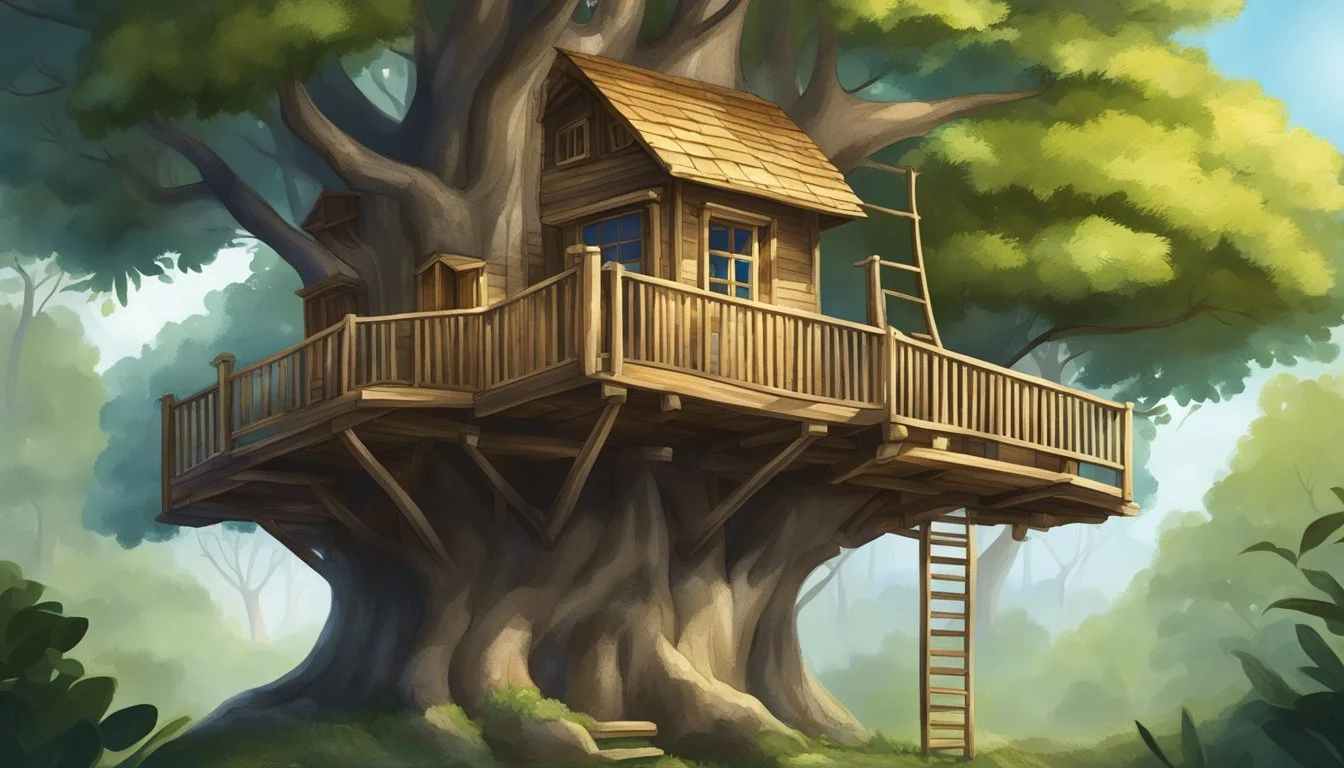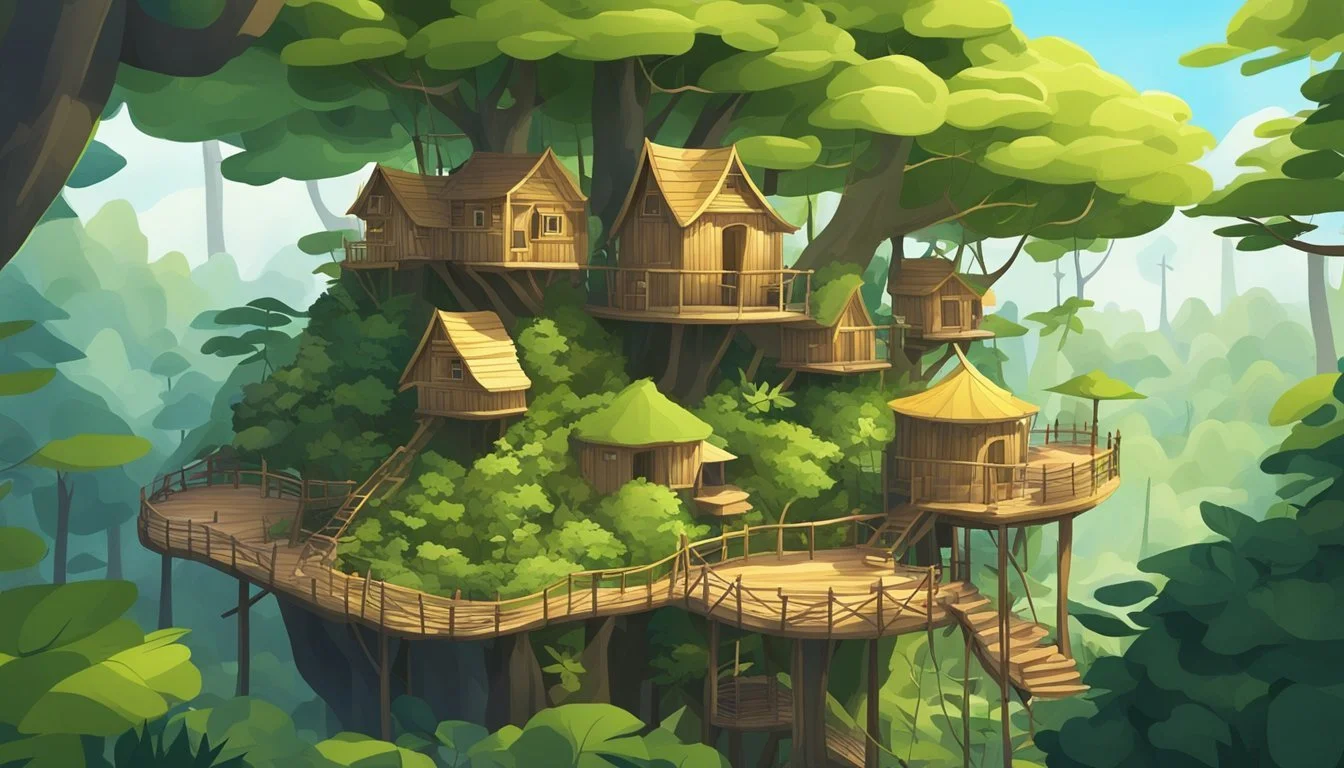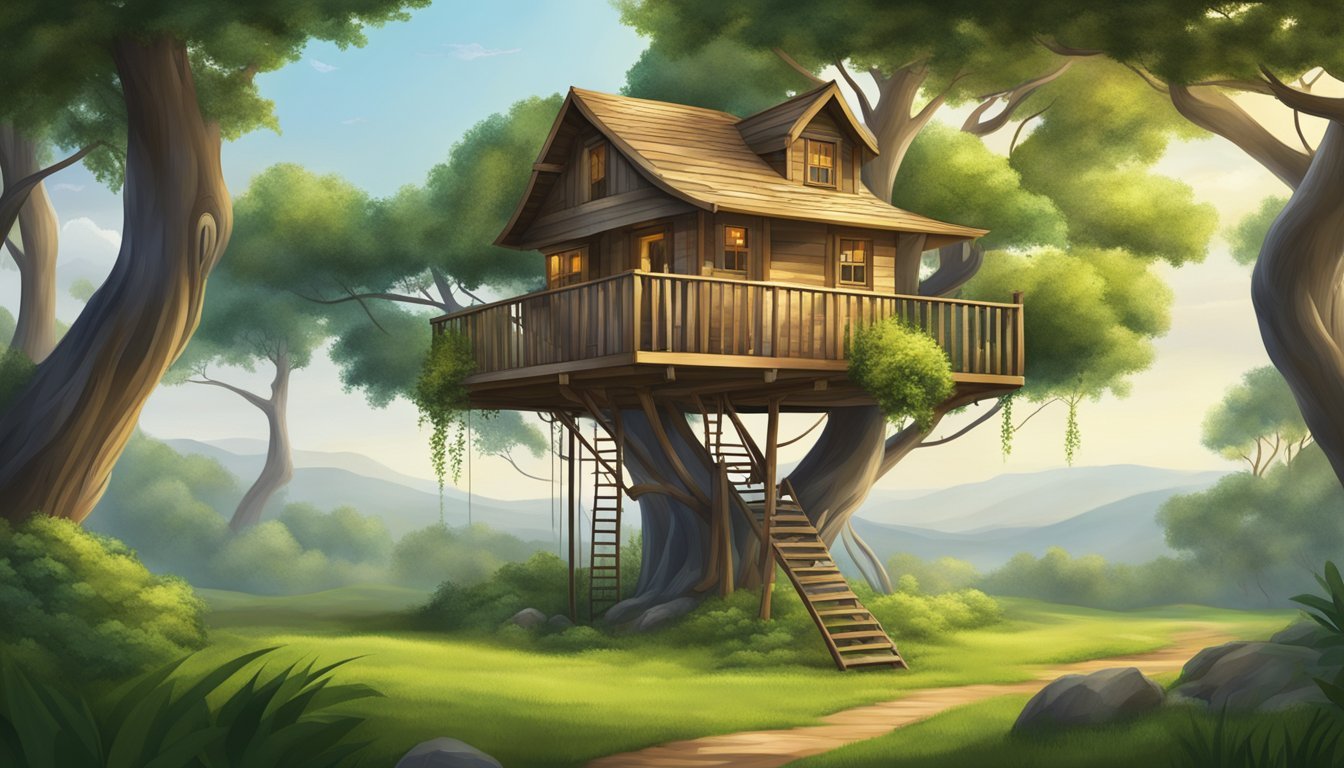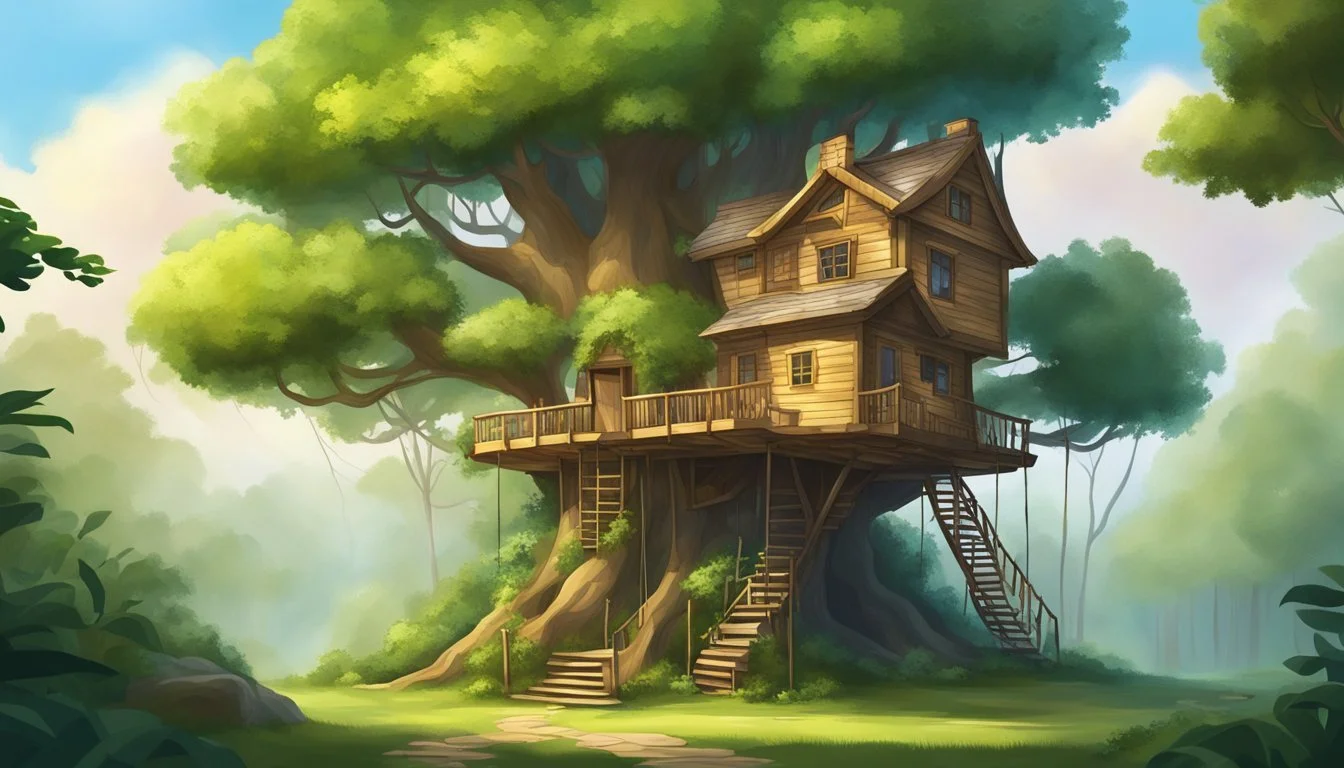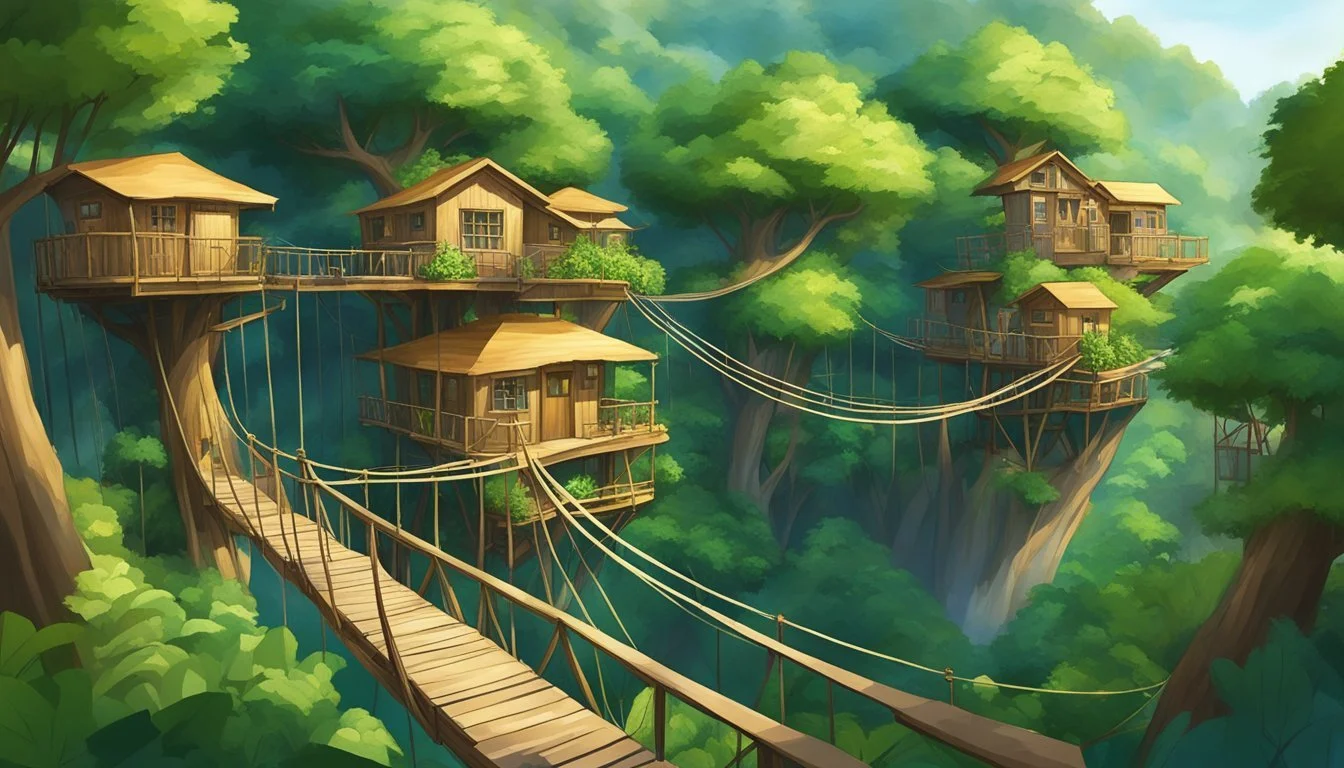Free Land for Treehouses
Exploring Unique Living Spaces
Living in treehouses offers a unique blend of nature and design, providing a perfect escape from conventional living spaces. Imagine waking up to the rustle of leaves and the scent of fresh air, while being nestled in a structure that blends seamlessly with the environment. Free land dedicated to
treehouse living is not just a dream but a growing reality in many areas, offering an extraordinary way to create comfortable and imaginative homes.
Treehouse designs can range from simple platforms suitable for children to elaborate, multi-room structures for adults. These elevated retreats cater to various needs and preferences, allowing individuals to immerse themselves in nature without sacrificing modern comfort. Many DIY plans available online offer step-by-step guides to help even beginners create their own treetop havens.
The allure of treehouse living lies not only in its aesthetic appeal but also in its sustainable and compact lifestyle. By utilizing free land designated for treehouses, residents can enjoy lower living costs while having a minimal environmental footprint. This harmonious way of living encourages a deeper connection with nature, fostering both relaxation and inspiration.
The Allure of Treehouse Living
Treehouse living attracts people for its unique combination of nature immersion and imaginative design, blending comfort and adventure in an unparalleled way. Both adults and children find these spaces enchanting, offering a perfect balance of luxury and whimsy.
Embracing Nature and Adventure
Nestled among tall trees in lush forests, treehouses provide a direct connection to nature. Residents wake up to the sound of birds chirping and leaves rustling. This immersive experience fosters a unique sense of peace and tranquility. Treehouse living allows adults to rekindle childhood wonder, while children enjoy an adventure-filled environment right at home.
Treehouses often serve as a retreat from urban life, offering a serene escape. Adventurers and nature enthusiasts find them particularly appealing. Various treehouse designs enable residents to feel at one with the surrounding environment, whether suspended in the canopy or built into a sturdy trunk. This close contact with nature promotes a healthier, more relaxed lifestyle.
Combining Comfort with Imagination
Modern treehouses are far from the rustic structures of the past. They integrate contemporary comforts such as heating, plumbing, and Wi-Fi while maintaining a strong connection to their natural surroundings. Luxurious elements like spacious decks, large windows, and high-quality materials elevate the living experience.
Creativity shines in treehouse design. Architects and builders use organic materials and innovative techniques, making each structure unique. From spherical designs swaying between trees to multi-level mansions nestled among branches, the variety is endless. These bespoke treehouses offer a blend of comfort and fantasy, catering to both the practical needs and imaginative desires of their inhabitants.
Finding the Perfect Trees
Choosing the ideal trees is crucial for building a treehouse. The species and health of the trees directly impact the safety and longevity of the structure.
Selecting the Right Species
The choice of tree species can significantly influence the durability and stability of a treehouse. Hardwood trees like oak and maple are excellent options due to their strength and longevity.
Oak trees are known for their robust wood and deep roots, providing a sturdy foundation.
Maple trees offer a solid base with their dense wood and widespread branches, ideal for supporting weight.
In contrast, avoid using softer or weaker species like fir or willow, as they may not support the treehouse long-term. Ensuring the tree matches the environment's natural surroundings also helps maintain ecological balance and sustainability.
Assessing Tree Health and Sustainability
Evaluating the health of the trees is essential for a secure treehouse. First, inspect for disease signs, such as dead branches, fungal growth, or trunk cavities. Prioritize trees that display firm branches and a healthy bark, indicative of their ability to bear extra weight.
Periodic assessments should be conducted to ensure ongoing health and structural viability. Sustainable practices include using non-invasive construction techniques that allow trees to grow and thrive without permanent damage. This approach not only supports the longevity of the treehouse but also contributes to environmental conservation. A healthy tree forms the backbone of a strong, enduring treehouse.
Design Principles for Treehouses
Designing a treehouse involves thoughtful planning to create functional, aesthetically pleasing, and nature-integrated living spaces. Key considerations include optimizing the use of space and selecting materials that harmonize with natural surroundings.
Maximizing Space and Functionality
Efficient use of space is critical in treehouse design. Given the limited area, architects must employ creative solutions like multi-functional furniture and compact storage options. Spatial planning should prioritize living essentials, ensuring areas for sleeping, cooking, and relaxation.
Design inspiration often comes from boat cabins or tiny homes, where every inch is meticulously used. Open floor plans can help create a sense of spaciousness. Lofted beds or foldable furniture can free up floor space. Platforms and decks extend the living area outdoors.
Tree house plans should also consider safety and accessibility. Sturdy railings, non-slip surfaces, and safe access points like secure ladders or spiral staircases are essential. Creating open, airy spaces while ensuring structural integrity is a delicate balance requiring professional insight.
Incorporating Natural Materials
Utilizing natural materials enhances the bond between the treehouse and its environment. Wood is the predominant material, chosen for its versatility and environmental benefits. Local hardwoods such as cedar, fir, and oak are popular for their durability and resistance to decay.
Sustainable sourcing is vital, aligning with environmental conservation efforts. Using reclaimed wood or bamboo can reduce the ecological footprint. Architects often incorporate the tree itself into the design, allowing branches to pass through floors or roofs, creating a unique aesthetic.
Interior design elements should also reflect the natural theme. Avoid synthetic materials and focus on items like stone, woven fabrics, and natural fibers. Integrating large windows can bring in light and offer panoramic views, fostering a deeper connection to nature.
By focusing on these principles, treehouses can become sanctuary-like spaces that are both practical and harmonious with their surroundings.
Constructions and Materials
Building treehouses requires careful selection of materials and innovative techniques to ensure stability, durability, and environmental sustainability. From using reclaimed and recycled materials to employing advanced engineering methods, each aspect plays a critical role.
Choosing Sustainable Building Materials
Selecting sustainable building materials is crucial for eco-friendly treehouse construction. Reclaimed wood is a popular choice, offering a unique aesthetic while minimizing environmental impact. Builders can source this wood from old barns, warehouses, or other structures.
Recycled materials such as metal and plastic can also be integrated into the build, providing cost-effective and sustainable alternatives. Using these materials reduces waste and promotes a circular economy.
Engineered wood products like cross-laminated timber (CLT) provide strength and stability, crucial for elevated structures. These materials are manufactured from smaller wood pieces, promoting efficient use of raw materials.
Innovative Treehouse Construction Techniques
Modern treehouse construction benefits significantly from advanced engineering techniques. Bolt-based attachment methods, such as Treehouse Attachment Bolts (TABs), offer strong, damage-minimizing connections between the structure and the tree.
Suspension systems can distribute the treehouse’s weight evenly, reducing stress on any single branch or trunk area. These systems often employ steel cables and tensioning mechanisms for enhanced stability.
Prefab components streamline the construction process, reducing on-site labor and allowing for precise assembly. Modular designs enable flexibility, making it easier to adapt the structure as the tree grows or when requirements change.
Innovative insulation materials like recycled denim provide effective thermal management while maintaining sustainability. This choice enhances comfort inside the treehouse without compromising ecological responsibility.
The Essentials of Treehouse Safety
Ensuring a safe and stable treehouse requires meticulous planning and an understanding of engineering principles, as well as implementing specific safety measures to protect children and families.
Engineering for Stability
The foundation of a safe treehouse begins with choosing a strong and healthy tree that can bear the weight. The tree should be mature with deep roots. Engineering calculations are essential to understand the load-bearing capacity, wind forces, and anchoring methods.
Using professional engineers to design the support system ensures that the structure remains stable. Bolts and brackets must be selected carefully to secure the treehouse without harming the tree's growth or stability.
Regular maintenance checks are critical. Inspect for wear and tear, especially around load-bearing points, ensuring that joints are tight and the tree's health is not compromised by the installation.
Safety Measures for Kids and Family
Safety measures for children and family include installing guardrails and barriers around platforms to prevent falls. Use non-toxic materials to ensure a healthy environment. Soft flooring materials, such as rubber mats, can help cushion falls and reduce injuries.
Install escape routes, such as ladders or ropes, ensuring they are accessible and safe to use. Fire safety equipment, including fire extinguishers, should be in place where possible.
Supervising children at all times and setting clear rules, like not climbing when wet or at night, enhances safety. Regular family briefings about safety rules and emergency procedures ensure everyone is aware and prepared for any situation.
Treehouse Features and Amenities
Treehouses today offer a blend of rustic charm and modern amenities, catering to both comfort and luxury. From fully-equipped kitchens and baths to unique personalization options, these elevated retreats provide a distinctive living experience.
Modern Comforts and Utilities
Modern treehouses often feature essential utilities similar to traditional homes. These include fully-equipped kitchens with appliances like stoves, refrigerators, and microwaves. Bathrooms in treehouses can range from simple composting toilets to full counterparts with showers and plumbing.
Electricity is a common feature, powering lighting, heating, and cooling systems. Internet access is also increasingly available. Some luxury treehouses come with high-end amenities like king-sized beds and climate control systems—ensuring comfort regardless of the season. Small details like insulation and double-glazed windows further enhance living conditions by maintaining a cozy environment.
Custom Features for Personalization
One of the standout features of modern treehouses is the ability to personalize the space according to individual tastes. Custom-built designs often incorporate unique themes, such as pirate ship-inspired structures or fairy-tale cottages.
For those who seek a unique lifestyle, custom furniture is frequently used. Examples include handmade beds carved to fit the treehouse’s natural contours or a bath with a cast iron clawfoot tub for a luxurious touch.
Some treehouse owners go a step further with additions like rope bridges, spiral staircases, and even small elevators. These creative elements contribute to not only the aesthetic appeal but also the functionality of the space, making treehouses a truly personalized and innovative living option.
Building a Community around Treehouses
Building a community around treehouses involves thoughtful design to encourage social interaction and creating spaces that attract visitors. This approach transforms treehouses from individual retreats into shared, vibrant hubs.
Fostering Social Interaction through Design
Treehouses can promote a sense of community by integrating common areas where residents can gather. Shared kitchens, communal dining spaces, and outdoor lounges are essential. These areas should be strategically placed to be accessible from all treehouses and designed to foster conversation and interaction.
Paths connecting treehouses should be well-lit and wide enough for group activities. Incorporating shared gardens or workshops can also enhance the community spirit. Interactive design elements, like fire pits or amphitheaters, can serve as focal points for gatherings, making it easy for social bonds to form.
Treehouses as a Unique Destination for Visitors
Treehouse communities can attract visitors seeking a unique and immersive experience. Offering rental options can introduce outsiders to this style of living, providing economic benefits for the community.
These treehouses should blend luxury with nature, offering comfortable amenities while emphasizing sustainable design. Hosting events such as workshops, yoga retreats, or art exhibitions can also draw in visitors, adding vibrancy to the community.
Marketing the treehouses' environmental benefits and unique architecture can further boost their appeal, turning the community into an eco-friendly oasis for tourists.
The Do-It-Yourself Approach
Building a treehouse can be an incredibly rewarding experience. Whether you are a beginner aiming for a simple hideout or an enthusiast interested in intricate designs, there are options tailored to suit your skill level and needs.
Simple Treehouses for Beginners
A simple treehouse is an excellent starting point for anyone new to DIY projects. These basic structures can be built using readily available materials such as pallets, which are both cost-effective and easy to work with.
Essential tools and materials:
Hammer
Nails
Screws
Wooden pallets
Measuring tape
Saw
Choose a sturdy tree in your backyard. Pallet treehouses often require minimal carpentry skills, making them perfect for those wanting to create a small yet functional space among the branches. Clear instructions and detailed measurements ensure that even beginners can build a stable and safe treehouse.
DIY Kits and Plans for Enthusiasts
For those with a bit more experience or ambition, DIY treehouse kits and plans offer a more structured approach. Professional builders often design these kits and plans, providing detailed diagrams, parts lists, and step-by-step instructions.
Features of DIY kits and plans:
Comprehensive guides
Parts lists
Source materials references
Detailed diagrams
These kits can be downloaded digitally, allowing enthusiasts to customize their treehouse designs according to their specific needs or creative vision. Whether constructing a cozy reading nook or a sophisticated hideaway, these resources empower builders to realize their treehouse dreams with precision and confidence.
Many plans also come with instructional videos, helping visual learners to grasp complex steps more easily. This approach demystifies the building process, making it accessible even for those embarking on their first major DIY project.
Unique Treehouse Styles and Inspirations
Unique treehouse styles range from traditional wooden structures to cutting-edge modern designs. World-renowned examples showcase innovative uses of materials and creative architectural approaches.
From Traditional to Modern Designs
Traditional treehouses often bring to mind rustic, wooden shelters nestled in the branches. These structures emphasize a connection with nature and are typically built using locally sourced wood. Many incorporate rope bridges and ladders, providing a playful and adventurous spirit reminiscent of childhood dreams and Tarzan's treetop home.
Modern treehouses, on the other hand, push design boundaries with sleek lines and sustainable materials. Companies like Snøhetta combine contemporary aesthetics with environmental mindfulness. Utilizing glass walls, minimalist furniture, and cutting-edge technology, these structures offer panoramic views while blending seamlessly with their environment.
Freestanding treehouses, built without the support of trees, rely on robust frameworks to elevate the structure. This style allows for greater flexibility in location and design, integrating features such as elevators or spiral staircases. These variations cater to both aesthetic and practical considerations, offering comfortable, year-round living spaces.
Notable Treehouse Examples Worldwide
The Treehotel in Sweden exemplifies striking architecture with rooms named and designed after distinctive concepts—like the Mirrorcube, where reflective walls create a unique visual effect. Each unit is a statement piece, marrying luxury with a treetop lifestyle.
In Costa Rica, a conservation-driven treehouse project provides not only a unique living experience but also promotes environmental education. These treehouses are immersed within rainforest settings, emphasizing sustainability and harmony with nature.
Dorset in the UK showcases epic tree houses by Blue Forest, a company known for creating elaborate structures that function as luxury resorts. Features often include hot tubs, large decks, and multiple interconnected huts, presenting a perfect blend of adventure and comfort.
Each of these examples highlights how treehouses can transcend traditional designs and offer unique living experiences that cater to different tastes and environmental considerations.


